SLC21/WK5: Choking and Airway Obstruction: A Complete Guide to Life-Saving First Aid Techniques
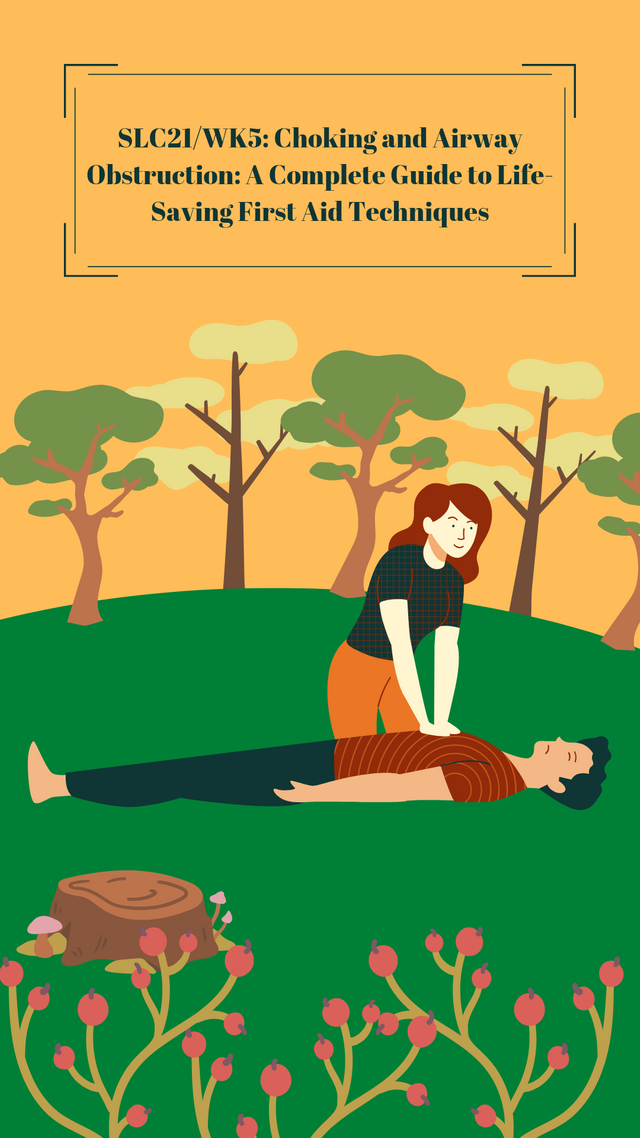
choking mechanisms and their physiological processes
Choking occurs when a foreign object or food enters the airway and blocks the flow of air to the lungs. This mechanism begins when an object or particle becomes trapped in the throat or upper respiratory tract. The obstruction can cause difficulty in breathing and air circulation, depending on the level of blockage.
Physiologically, the body has a protective mechanism called the cough reflex which is designed to remove foreign objects from the airways. When an object enters the airways and blocks the airway, the body will respond by coughing hard to try to dislodge the object. If coughing is unsuccessful, our body will try to adjust by increasing the frequency of breathing or breathing rapidly. In cases of complete blockage, our body will have difficulty breathing, which can lead to decreased oxygen levels in the blood and impaired organ function.
characteristics or signs of choking
difficulty breathing
A person who is choking will have difficulty breathing, seen with rapid, shallow or even gasping breaths. In a complete blockage, breathing may stop altogether.the second is a hard cough.
the cough reflex is the body's first attempt to expel a foreign object from the airway. if someone is choking, they will tend to cough hard in hopes of expelling the object.panic and difficulty speaking and sufferers often panic and cannot speak due to difficulty breathing. in many cases, they may try to call for help by gesturing or pointing to their throat
Pale or bluish skin color, if the airway is blocked for a long time and the flow of oxygen is disrupted, the sufferer's skin or lips can change color to pale or bluish (cyonosis) due to decreased oxygen levels in our bodies.
Differentiate Between partial and total blockage
partial obstruction, in partial obstruction part of the entire airway is still open, allowing air to enter. The sufferer may cough or have difficulty breathing, but is still able to make sounds or speak. and common features include coughing, disturbed breath sounds, and rapid breathing.
total obstruction, the airway is completely blocked and the sufferer cannot breathe or speak at all. they often show symptoms of panic and no sound can be made because air cannot enter the lungs. if we are not treated immediately, total obstruction can cause loss of consciousness and can even cause death.
urgent care.
if partial obstruction occurs, encourage the patient to cough and provide respiratory support if necessary. in complete obstruction, immediate measures such as the Heimlich technique (abdominal thrust maneuver) or back blows can help to displace the foreign object and open the airway.
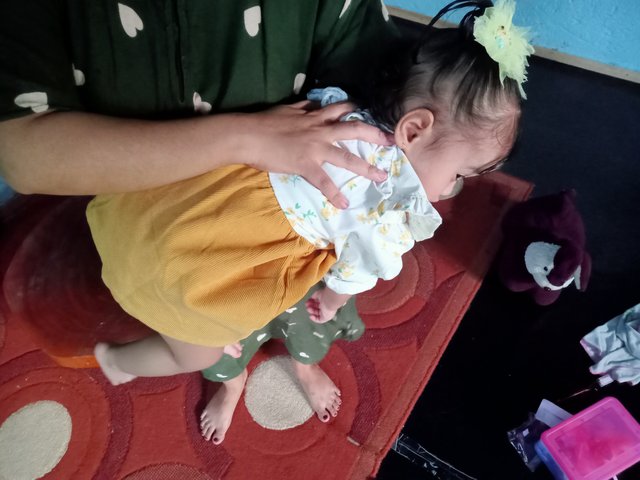
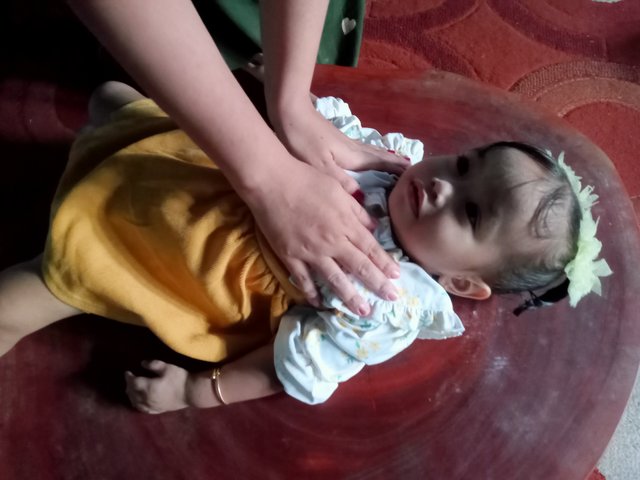
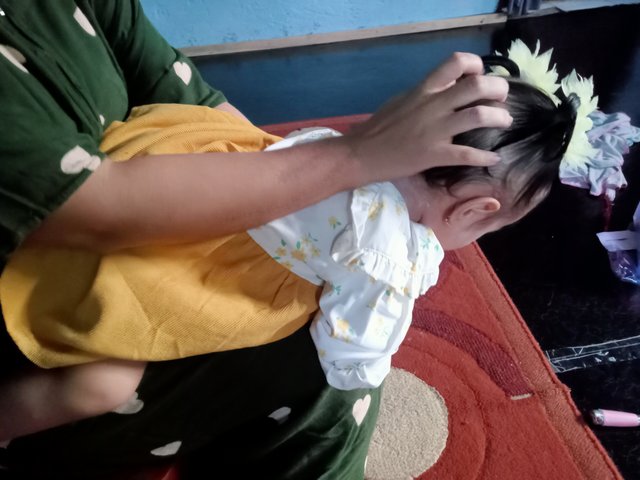
The images I share are only for guidance and should not be copied by minors.
Heimlich maneuver: procedure and explanation I can give
Heimlich maneuver is a first aid technique to overcome choking due to total airway obstruction. This technique uses abdominal thrusts to create enough air pressure to dislodge a foreign object from the airway.
Identify choking conditions, make sure the victim is really experiencing total blockage. The signs are not being able to speak, cough or breathe and accompanied by movements of the neck.
correct position, stand behind the victim, support his body if he looks weak or almost faint.
hand placement, clench one hand and place it right above the victim's nape. The other hand holds the head tightly to apply pressure.
push technique and do a quick push in and up (like forming the letter "j"). repeat until the foreign object comes out or the victim starts breathing normally.
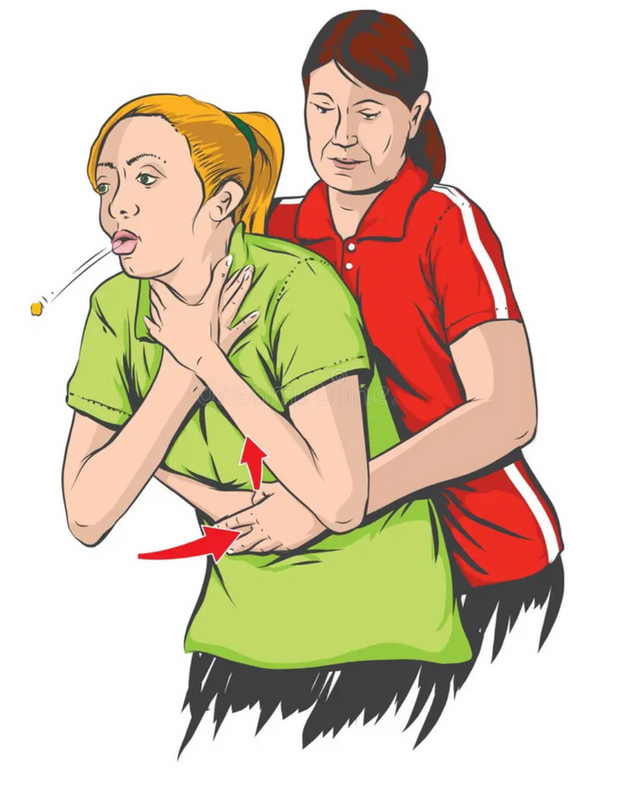
when you find someone who is still conscious and choking on food, immediately make sure that they are really experiencing a blockage of the airway. signs such as holding the neck, difficulty speaking, shortness of breath and skin that is starting to turn blue (cyanosis) indicate a total blockage. and here are the steps we need to take.
Stay calm and make sure the situation is safe. Reassure the victim that and tell them that we will help. Ask someone else to call for medical help if the situation gets worse.
encourage the victim to cough, if the victim can still cough and let them expel the foreign object by coughing hard. do not immediately take physical action.
If coughing is ineffective, stand behind the victim. Make a fist and place it above the victim's navel, then push in and up quickly (like a "j" shape). Repeat until the foreign object comes out or the victim begins to breathe normally.
monitor the victim's condition, and after the airway is open, make sure the victim can breathe smoothly. if the foreign object does not come out and immediately contact medical personnel and continue assistance efforts.
- partial obstruction: encourage the victim to cough as hard as possible to dislodge the foreign object. do not give back slaps as this can worsen the obstruction. complete obstruction: if the victim is unable to breathe or speak, immediately perform the Heimlich maneuver. stand behind the victim, make a fist and place it above the navel, press inward and upward quickly. repeat until the foreign object is dislodged. if the victim loses consciousness, perform CPR while waiting for medical help. immediately call emergency services for professional help.
That's all I can share in this contest edition and thank you for the invitation to brother @aril.hatake. and also invite other steemians to be willing to attend this contest edition @patjewell, @marito74 and @emsonic good luck to all of us.
 Click Here
Click Here 
Best regard @fajrulakmal99
Student Name: @fajrulakmal99
Overall grade: 5
Plagiarism Check: Pass
AI Use: No
General Feedback: The student has shown an average nderstanding of this week's course. There were a few shortcomings which I'm sure will be avoided in the upcoming posts.
Thank you.
Regards,
@huzaifanaveed1
Please remove the #teachingteam tag - that is for applications for the next season of the Learning Challenge.
Terimakasih atas masukan dan sarannya pak🤝
https://x.com/fajrulakma93753/status/1861778284318761027?t=Un7xDLsCP_kVdCxQFKbLMg&s=19